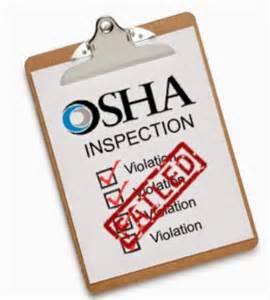OR-OSHA ALERT!
Shorter Fall – Steep Penalties
 For a number of years the Oregon Occupational Safety and Health Administration (OR-OSHA) has had a rule in place that if a worker could fall 10 feet or more to the next lower level then fall protection had to be put into place to protect that worker. Of course there are exceptions—such as steel tower builders who must have had an excellent lobby because their workers do not have to use fall protection until the employees are 25 or more feet off of the ground, but generally all other companies had to use the 10 foot rule.
For a number of years the Oregon Occupational Safety and Health Administration (OR-OSHA) has had a rule in place that if a worker could fall 10 feet or more to the next lower level then fall protection had to be put into place to protect that worker. Of course there are exceptions—such as steel tower builders who must have had an excellent lobby because their workers do not have to use fall protection until the employees are 25 or more feet off of the ground, but generally all other companies had to use the 10 foot rule.
That changed on January 1, 2017. As of that date the height was lowered to 6 feet. That brings Oregon in line with Federal OSHA standards. States can have their own OSHA rules as long as it ‘substantially complies’ with federal rules.
Penalties can be steep for failure to comply with the new fall protection rule. In 2016 initial penalties totaling $603,010 were levied for fall protection violations. Enforcement Officers have some discretion when issuing a citation depending on the potential for serious injury. If an employee can fall and be impaled due to exposed rebar the fine will be much different than if they could fall onto a hedge.
The new rule will directly impact many who usually work less than 10 feet of the ground and on a gentle pitch. In many circumstances no fall protection was previously needed. But under the new rules, virtually every roofer will be required to use fall protection.
- Or how about working in an attic where you walk on rafters and can fall through the sheet rock?
- Painting a single- or two-story house
- Installing siding on homes
If you’re unsure how to apply fall protection to the new 6-foot rule, Cardinal suggests thatyou should request a visit from OSHA Consulting. They should be able help you come up with a practical plan. When you implement that solution from OSHA Consulting, we advise you to keep copies of any documents from them that outlines or details their recommendations in case an Enforcement Officer has a different interpretation of the rules. Having this documentation may help guard your company against any unwanted penalties.
Cardinal will continue to keep you updated on the application of this new rule and its impact on Risk Management.
